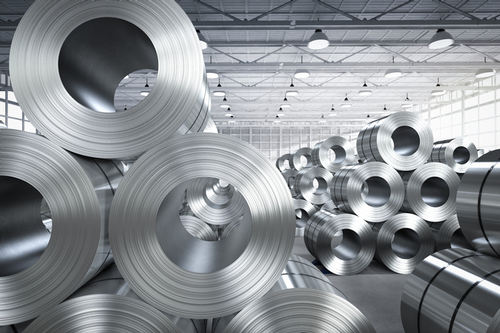THURSDAY, JANUARY 30, 2020
Last week, President Donald J. Trump announced an expansion of tariffs on foreign steel and aluminum, claiming that the existing tariffs were not as successful as he’d hoped in restoring American production.
While imports of steel and aluminum into the United States have declined since the tariffs were established in 2018, imports of products made with the same materials have had a significant increase, according to Trump.
Steel Tariff History
In March 2018, Trump imposed tariffs to affect steel and aluminum imports from other countries across the globe. The assigned duties were 25% on steel products and 10% on aluminum.
Companies that felt they needed to use steel or aluminum from another country—because that particular product wasn’t made in the U.S., for example—had the opportunity to apply for an exemption.

 |
| PhonlamaiPhoto / Getty Images |
|
Last week, President Donald Trump announced an expansion of his tariffs on foreign steel and aluminum, claiming that the existing tariffs where not as successful as he’d hoped in restoring American production. |
By June, the U.S. allowed the tariffs to go into effect for Canada, Mexico and the European Union, after months of discussion of possible exemptions. The U.S. Department of Commerce also announced the first round of exemptions, while noting that it would be investigating whether some companies in the market were taking advantage of the duties and raising prices unduly.
In May the following year, Trump continued work on updating the USMCA, Steel Dynamics CEO Mark Millett went on the record to say he believed a quota system would replace the current tariffs that the steel and aluminum industry were subjected to.
However, some in the aluminum industry were reportedly against the quotas, in fear that they would raise prices on aluminum-dependent goods. That same month, Trump later announced that the U.S. would lift its steel and aluminum tariffs imposed on Canada and Mexico in exchange for a new monitoring and enforcement system that will prevent import surges into the U.S. As a part of the agreement, Mexico and Canada would also lift its retaliatory tariffs on American products.
In July, Trump signed an order that would see the expansion of the use of American-made iron and steel in federal projects. The “Buy American” platform aims to push the domestic content threshold from 50% to 95%.
By December, officials from Canada, Mexico and the United States signed a deal once again. The United States-Mexico-Canada Agreement replaced the North American Free Trade Agreement, and both the U.S. United Steelworkers union and the AFL-CIO labor voiced their approval of the deal.
Most recently, Trump signed an initial trade deal with China that lowered levies on some other goods. The tariff is expected to stay in place, even after the election, as any move to reduce them will hinge on Beijing’s compliance with the terms of a phase-one trade accord.
According to reports, after the first phase goes into effect, the U.S. will maintain 25% tariffs on $250 billion of Chinese imports and a 7.5% levy on another $120 billion.
What’s Happening Now
Beginning on Feb. 8, the United States will be expanding its tariffs to cover products made of steel and aluminum. This decision will cover products such as nails, tacks, staples, cables, certain types of wire, bumpers, various car and tractor parts, among others.
In Trump’s order for the expansion, he noted that from June 2018 to May 2019, imports of items including steel nails and staples rose 33% and imported aluminum wire and cables were up 152% over the same period.
Under the new program, specific products made of aluminum will be subject to an additional 10% duty and certain steel products will be tacked with a 25% tariff. However, Argentina, Australia, Canada and Mexico are exempt from the expanded aluminum tariffs. Those countries, along with Brazil and South Korea, are also exempt from the new steel tariffs.
Although American companies making these products invite the tariffs as a relief—as the endeavor reportedly ensures fair competition between manufacturers—economists and trade experts expect that the approach with China will outweigh its benefits for producers.
While capacity utilization in steel producing plants has not stabilized above 80% (the administration’s goal), Trump insists that the expanded trade policies will revive the manufacturing sector by protecting American businesses from unfair competition and encourages companies to move thier factories back to the nation.
Tagged categories: Aluminum; Carbon Steel; Government; President Trump; Program/Project Management; Project Management; Stainless steel; Steel; Structural steel